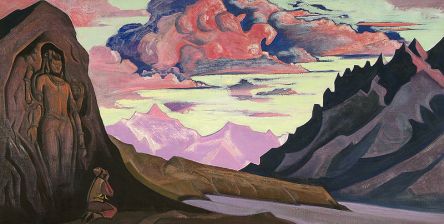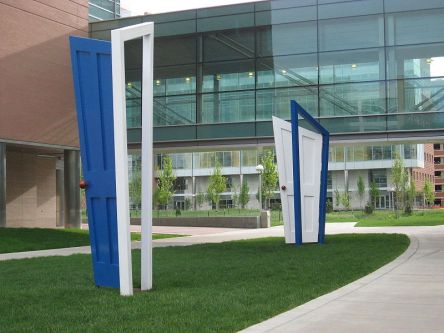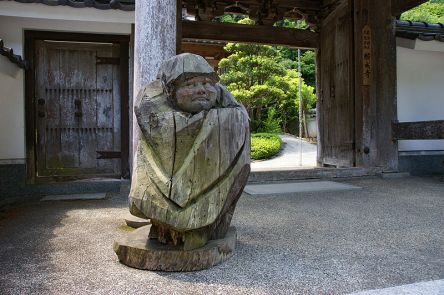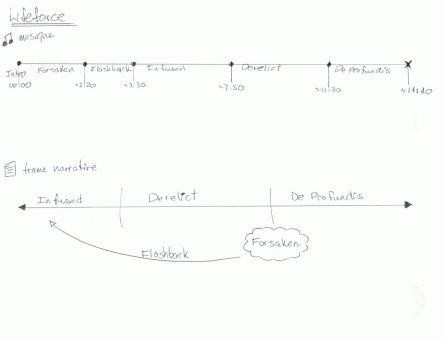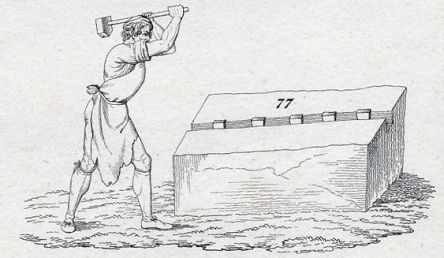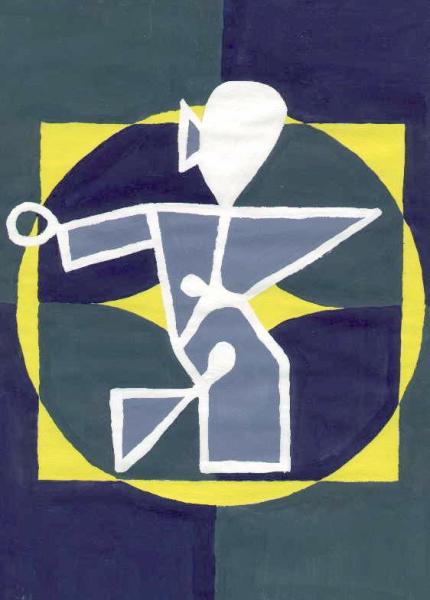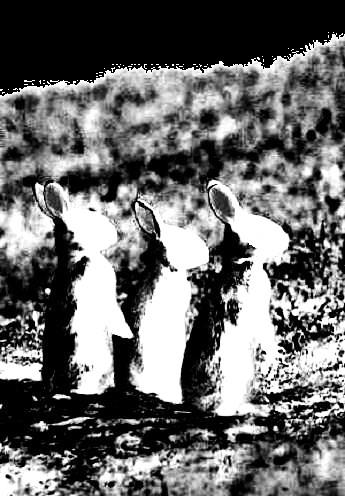
(« Watching The Arrival Of The Mothership » by Mark Brumfield)
The Lepufology Project started as an instrumental composition meant as a tribute to Robert Anton Wilson's book « Quantum Psychology » in which he coins the word lepufology to refer to the study of rabbit-related UFO encounters.
As the composition was intended from the onset to remain instrumental, I decided to write a basic synopsis, more a list of scenes actually, in order to give the piece direction and structure :
1. Alert ! Possible Alien Leporids Spotted In The UK
2. Pre-Trip Frenzy
3. Cab Ride To The Airport
4. Uneventful Flight Over The Atlantic
5. From Heathrow To The Discovery Scene
6. Identification - The Formula Is 3.0.3.3 + 1.0.2.3
7. Back To The Airport
8. Mild Turbulence Over The Atlantic
9. Finally Home
From that starting point, the work progressed and I quickly found myself developing the story further and further until I finally ended up with a short story in four chapters, along with the music to go with it.
So, The Lepufology Project is also the story of Jack Babbitt, regarded as one of the world’s most trustworthy investigators of the paranormal, and whose unfaltering curiosity for the mysterious leads on an international chase seeking bizarre rabbits of extra-terrestrial origin that finds its resolution in the tar sands deposits of Alberta.
« Lepufology 101 » is the first episode of Jack's adventures, and its full title is really « Lepufology 101 - Identifying Alien Leporids. » Leporids are the approximately 50 species of rabbits and hares which form the family Leporidae.
Jack is at home in New Hope, Minnesota, working in his office. He is filing documents and writing his observations relative to a crop circle investigation near Fosston, about 450 km northwest from where he lives, that he completed the day before. He receives an email from a British friend located in Brighton informing him that somebody has found a very strange looking and unusually-long-legged dead rabbit near the town of Christchurch, in the Dorset area.
As he has been aware of reports of such creatures lately, which are deemed to be of extra-terrestrial origin, he is very excited by the prospect and packs his stuff as quickly as possible so as not to miss the next flight to the United Kingdom.
He takes a cab to the nearby Minneapolis-St Paul International Airport. He has to rush to catch the plane, but finally makes it on time.
Over the course of the flight, Jack works on his laptop, revisiting old reports of rabbit-related cases.
He lands at Heathrow where his friend waits for him. He gets into his car and they drive to Christchurch. While driving, his friend tells him more about the circumstances of the discovery.
They arrive at the scene. Jack starts looking around and takes photos. He is shown the dead creature. He takes more photos, put gloves on, and examine the animal. He notices the size of the rabbit’s legs and that its eyes have a weird shape, but it’s nothing new for him as he had already read about those characteristics in earlier reports. He further inspects the carcass until something odd strikes him : the rabbit appears to have extra teeth. He puts the body in a bag and takes a last look at the scene before returning to the car. He fires up his laptop and starts searching for more information, until he finds what he wanted : the dental formula of the dead rabbit is different from that of most leporids found on Earth, as this one has two more incisors than normal. He feels he’s onto something, smiles, and shares his discovery with his friend.
They put Jack’s stuff into the car, and they drive back to the airport. While driving his friend reminds Jack that crop circles have been observed near Christchurch in the past, one near Ripley in April 2005, and one near Waterditch Farm in June 2006. Jack recalls those events as several of his past investigations involved crop circles in England.
Jack leaves his friend at the airport and boards the next plane back home. During the flight, Jack resumes his work on the case, writing his observations. The feeling that he has found something significant deepens, and he reviews the reports of rabbit-related incidents, this time with more attention.
Jack leaves the airport in a cab, rides home, and goes straight to his office where he unpacks and resumes working.
As a side note, the impression I was under when reading the neologism was that it's only a fictional discipline created by Wilson as a way to demonstrate the power of words in stimulating the imagination. Or maybe there are lepufologists out there, who knows really.
